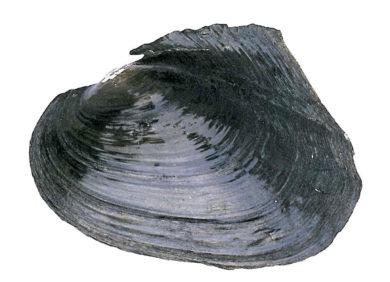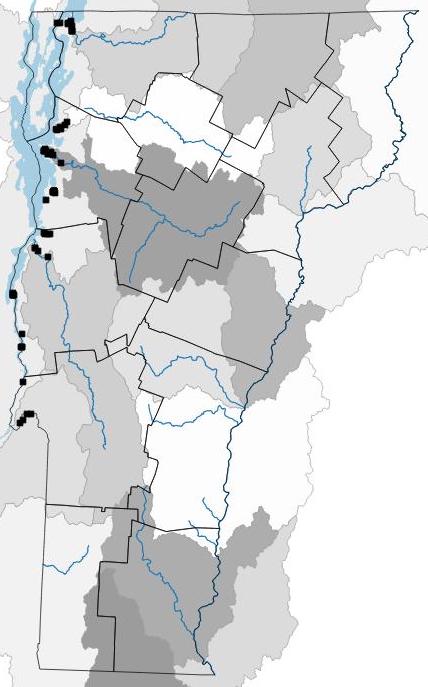 The Pink Heelsplitter, a freshwater mussel with a luminous pink interior, is also known by the names pancake for its compressed, flattened appearance, and hatchet-back for its sharp posterior wing.
The Pink Heelsplitter, a freshwater mussel with a luminous pink interior, is also known by the names pancake for its compressed, flattened appearance, and hatchet-back for its sharp posterior wing.
Key Characteristics
- Size: Large; length up to 8 inches
- Shape: Elongate and rectangular with a distinct posterior wing. The shell is laterally compressed, with a beak only slightly elevated above the hinge line.
- Periostracum: Green, dark brown, or black, sometimes with green rays. Older specimens tend to be darker in color.
- Lateral Teeth: Long, thin, and straight; two in the left valve, two in the right.
- Pseudocardinal Teeth: Small; two in the left valve, two in the right
- Nacre: Iridescent, pinkish- purple or purple.
- Similar Species: Fragile Papershell
Conservation Status
- State and Global Rank: S2G5
- Vermont Endangered Species Law: Endangered
- Vermont Wildlife Action Plan: Species of Greatest Conservation Need.
Habitat
Medium to large rivers in nearly every type of substrate including gravel, sand, and mud. It can also adapt to shallow lake habitats.
Host Species
Freshwater drum
More Information
Range
In Vermont, it occupies the Missisquoi River, Lamoille River, Winooski River, Lewis Creek, Otter Creek, Hospital Creek, and Poultney River, and only below the principal fall-lines of these rivers. It also occurs in the littoral zone of Lake Champlain. It is not common in Vermont.
Distribution map has locations where this species has been documented and digitized into the atlas database. Systematic surveys have not been conducted for many species and those surveys that have been conducted have been largely focused on endangered species. Therefore, in some cases, the actual distribution of freshwater mussels may be more extensive than what is presented here. Shaded areas are watershed sub-basins and river main stems are shown.







